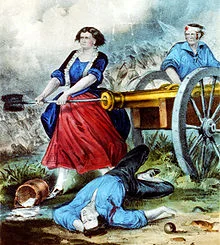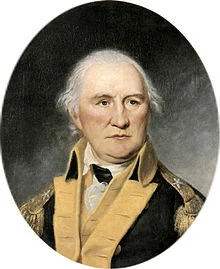Richard Montgomery and the Invasion of Canada
Richard Montgomery is one of the few people in history who can claim to have led an invasion of Canada. Unfortunately, this success was not long lived.
Richard Montgomery
Richard Montgomery was an Irishman who spent his career serving as an officer in the British Navy. He sailed to America and participated in the French and Indian War.
After hostilities ended, Montgomery was kept in Upstate New York where he took part leading men in Pontiac’s War. During this time, Richard was exposed to many of the complaints the colonists had about taxation.
In 1765, Montgomery returned to Great Britain. After his fiance left him, he was passed over for a promotion, most likely due to his sympathy for the Americans. Richard decided to move to New York to become a farmer.
Joining America
In 1772, Montgomery bought land in Kings Ferry, which today is a part of the Bronx. Soon after, he married Janet Livingston whom he’d met during his first trip to the United States. Together they moved to Rhinebeck, further up the Hudson.
Despite being hesitant to join the Rebel Cause, Montgomery was elected to the New York Provincial Congress. Because of his wartime experiences in New York, Richard was asked to help instruct the militia in preparing for the colony's defense.
Invading Canada
After appointing George Washington Commander-in-Chief of the Continental Army, the Continental Congress chose generals from each state to support him. Montgomery was chosen as a Brigadier General, second in New York only to Philip Schuyler.
Montgomery and Schuyler were ordered by Washington to lead an invasion of Canada. They headed north but, while planning their attack, Schuyler became sick.
When the time came to cross the border, Montgomery was placed in charge of the soldiers. At this point, he became a Major General.
During the autumn of 1775, Montgomery had his men bombard Fort St. Jean just outside Montreal. If this Fort was taken, it would leave the city exposed. Eventually, after two months of bullets and cannon fire, the British surrendered.
The Continental Army then marched to Montreal and conquered the city with little resistance.
Quebec
Montgomery then moved to meet General Benedict Arnold’s forces (who had marched through hard conditions on the Maine frontier) outside of Quebec City.
The Americans then tried to convince the people of Quebec to join their cause (imagine if Canada had been a part of the United States?). Unfortunately, this did not work.
Montgomery attacked during a snowstorm in late December 1775. They surrounded the city and attacked from all sides, though Montgomery and Arnold led the majority of the soldiers into the weaker part of the city.
The Continentals initially were successful, but then tragedy struck.
Richard Montgomery drew his sword and ran into the battle. He was hit in the face by a bullet and killed instantly.
Seeing this, his men panicked and retreated. In turn, Arnold and the rest of the invaders were forced to retreat.
Conclusion
With the death of Richard Montgomery, the invasion of Canada was abandoned. Had he survived, Quebec may very well have been conquered, and therefore a part of the United States from the very beginning.
Unfortunately, this brave soldier, like that of Dr. Joseph Warren, did not even survive the first year of the Revolutionary War. But, also like Warren, Richard Montgomery became a martyr to the Patriot Cause.
Montgomery’s bravery became a symbol which other proud revolutionaries kept in their hearts for the rest of their lives.
If you like this article and would like to receive a new Founder to your inbox every day, please subscribe to our email list.
For more on the invasion of Canada, try reading 'Benedict Arnold's Army. It's very interesting to look at Arnold as an American hero and has much about Montgomery. Also, our Book of the Month is 'Plain, Honest Men.' Its an amazing look at the Founders who wrote the Constitution. All sales are through Amazon and buying through this site does not change the price.







